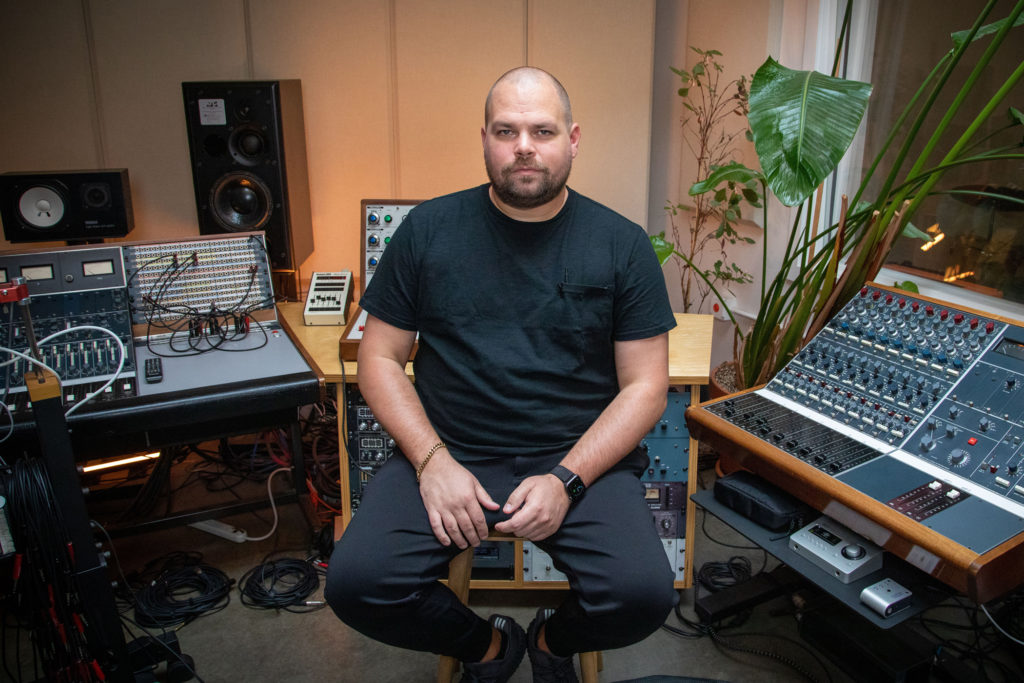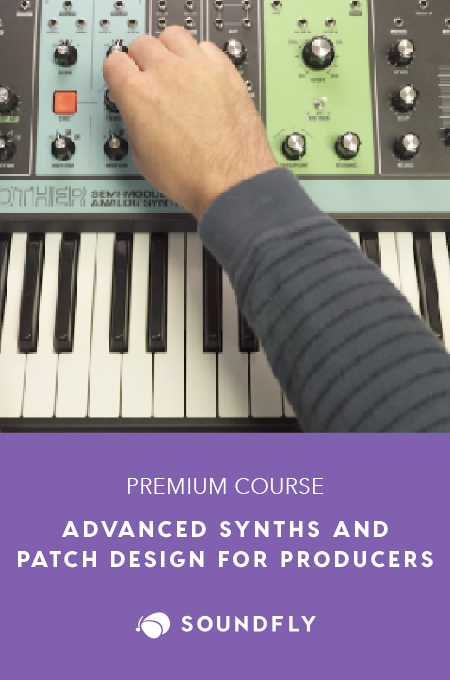+ Producers, Synth Heads and Sci-Fi Nerds, our new course with synthwave pioneer, Com Truise: Mid-Fi Synthwave Slow-Motion Funk, is out now!
Listen to almost any Com Truise track and amongst the gooey, ethereal, hyper-creative synthwave lushness, you’re bound to notice one thing: kick-you-in-the-jaw kick drums that punch through like a .38 caliber Dirty Harry hand cannon.
In fact, coulda shoulda woulda. Let’s take a listen to the some of the most beloved tracks from Seth Haley (better known as Com Truise) below. In most of these mid-fi, mid-tempo bangers, one thing remains true throughout: his kick drums pack a punch!
Achieving that sound is super doable — we made a whole online course about it. Let’s go over five of our tippy top tips for getting punchy, munchy kicks.
1. Don’t Put Lipstick on a Pig
First things first: pick the right sample (or samples). If you spend a little extra time looking for the sample that works best in your mix, rather than trying to process something that isn’t working, you’ll find it a lot easier to get it to punch. For that synthwave sound, you can try samples or direct recording from synths like the Roland TR-505 or 909, Oberheim DMX, DrumTraks, LinnDrum, or other similar retro style drum machines.
One key to the kind of patch you’re looking for is a super quick attack and not a lot of decay. “Punch” isn’t the word that describes a booming, long 808, for example. You want a snappy sample that you can elevate.
Consider layering samples as well to build a unique kick that does everything you want it to. Com Truise himself is fond of layering the 505, DMX, and DrumTraks, adding some distortion, compression, and then using frequency shifting to tune the final drum sound.
+ Enjoy access to Soundfly’s suite of artist-led music learning content for only $12/month or $96/year with our new lower price membership. Join today!

2. EQ for Punch
A little EQ will get you a long way toward your desired punch. Start by looking for frequencies anywhere from 45-90Hz or thereabouts to boost a little — but not too much — and maybe none at all. Too much low frequency boost may have the opposite effect by muddying up the mix and eating up headroom. Be sure to listen in context, especially with the bass.
Consider giving the bass and kick their own space by cutting one of them in that key area a little. If your bass is more of a subby, low frequency monster, consider the possibility of letting it occupy that lower range and letting the kick smack you in the mid gut more.
Next, find honkiness and mud in the low to mid-range — usually anywhere from 250-900Hz. Some mixers swear by making a significant cut over that whole area to remove that undesirable tone.
Finally, you might look for a boost in the 5-8kHz range to add to the “click” of the kick sound that helps it cut through the mix even on small speakers.
3. Saturate to Fatinate
Saturation — good old-fashioned harmonic distortion (of the pleasing kind) — can help give a kick character and push it through a mix. You can use a preamp plugin, tape emulator, or even a tube or distortion plugin to grind it up a little. Too much might leave you too soft though, but you can always make a copy or send to a buss and mix the saturated sound in subtly.
One cool trick is to use a processor like Slate’s KiloHearts Multipass to add some goodly saturation only to the midrange — say between 1-4kHz or so. This helps the kick get just a little nasty without messing with that high end click and the woomph of the low end.
4. Keep it Mono and Be Careful With the Verb
Kicks that shoot through a mix like Com Truise’s tend to be best done in mono and left dry or mostly dry. A spread out stereo kick can sound lovely on its own and may be great in some tunes, but if you want it to punch, leave it in mono. If a sample happens to be in stereo, split it and throw away one side.
While you’re at it, don’t juice up the kick with a lot of reverb if you want it to be punchy. Reverb will wash a kick out and blend it in with everything. Of course, a little may be helpful, but keep it light, and consider a good amount of pre-delay so that the initial hit stands alone.
+ Read more on Flypaper: “Emulating Boards of Canada’s Classic Synth Sound Without Breaking Your Bank (or Brain).”
5. Compress to Impress
Compression is a major key to punching up anything — especially kick drums. For a starting place, use a slower attack and a fast release. A slow attack will allow the transition snap to come through before the compressor engages, and a quick release will make sure the kick doesn’t sustain out and muddy the rhythm up.
Try starting with around a 4:1 ratio and go for 1-3 dB of gain reduction.
You might also try a parallel compressor. As an overview, this just means copying your track or sending it to an extra buss and compressing the daylights out of that new signal. Mix the super compressed version in underneath the unprocessed kick for monstery goodness without losing transient punch. This can be applied to the whole drum buss instead, or you can try employing the New York City compression trick to beef up the drums and bass together.
Finally, you might want to apply sidechain compression to other elements such as the bass to make room for the kick. Put briefly, sidechain compression means asking a compressor to work not in response to the signal it’s processing, but to another. In this case, a compressor would duck the bass a little each time the kick hits.
There’s nothing more satisfying than achieving peak punch with your kick drums, and a bad ass kick is the centerpiece of any sick beat. Start with these tips and see if you can’t punch through a few rib cages like our friend Com Truise.
Don’t stop here!
Continue learning with hundreds of lessons on songwriting, mixing, recording and production, composing, beat making, and more on Soundfly, with artist-led courses by Kimbra, Jlin, Kiefer, RJD2, Ryan Lott, and of course, Com Truise: Mid-Fi Synthwave Slow-Motion Funk.




